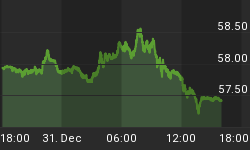The good news is:
• All of the major indices closed at multi year or all time highs on Friday.
Short Term
The Dow Jones Industrial Average (DJIA) completed the 7th of 7 consecutive up days on Friday for the second time this month.
In the past 20 years there have been two similar events in 1987 and 1996, but, none this close together.
The chart below covers the past 6 months showing the DJIA in red and an indicator showing the percentage of the previous 7 trading days that have been up in green. The indicator touches the top of the chart when there have been 7 or more consecutive up days and it touches the bottom of the chart when there have been 7 or more consecutive down days.

Prior to this month, the last time the DJIA was up for 7 consecutive days was in June 2005 shown in the next chart.

The next to the last time was in March 2003 shown in the next chart. 2003 was also the 3rd year in the Presidential Cycle.

Going back, the next occurrence was September 2000 shown in the next chart. Unlike the latter occurrences the DJIA continued to rise for the next month.
The DJIA has risen for 7 or more consecutive days about once every two years and that rise has usually been followed by a brief but sharp decline.

Intermediate term
In a healthy market new highs expand as prices rise. As the market approaches a top, leadership, as measured by new highs, narrows.
The chart below covers the past year showing the S&P 500 (SPX) in blue and an indicator showing a 10% trend (19 day EMA) of NYSE new highs in green.
Since December, progressively higher highs in the SPX have been accompanied by fewer new highs.

The next chart is similar to the one above except the index is the NASDAQ composite (OTC) shown in orange and the indicator has been calculated from NASDAQ new highs.
The pattern is similar to the chart above.

The next chart shows the Russell 2000 (R2K) in red and the new high indicator calculated from the component issues of the R2K in green.
New highs were calculated from the component issues of the R2K over the trailing 6 weeks rather than 52 weeks as reported by the exchanges.

The next chart shows the SPX in red and the new high indicator calculated from the component issues of the SPX over the trailing 6 weeks in green.
Since the early March lows there has been a sharp expansion of new highs among the component issues of the SPX.

The relatively greater expansion of new highs in the blue chip SPX compared to the broader market and smaller capitalization indices suggests we are entering a late phase of this bull market that will be led by the blue chips.
Seasonality
Next week includes 5 of the last 6 trading days of April during the 3rd year of the Presidential Cycle.
The tables show the last 6 trading days for the OTC from 1963 - 2003 during the 3rd year of the Presidential Cycle and the SPX from 1931 - 2003.
There are summaries for both the 3rd year of the Presidential Cycle and all years combined.
On average next week has had a modestly positive bias.
Last 6 days of April
The number following the year represents its position in the presidential cycle.
The number following the daily return represents the day of the week;
1 = Monday, 2 = Tuesday etc.


Mutual Fund
Compliance issues demand that I not mention the mutual fund that I manage by name or symbol in this letter.
To see a current chart of the fund go to: http://finance.yahoo.com/q/bc?s=APHAX&t=3m
For information about the fund go to: http://www.thealphafunds.com/index.htm. The fund now has service class shares available.
Conclusion
The market is overbought and seasonality offers only a modestly positive bias.
I expect the major indices to be lower on Friday April 27 than they were on Friday April 20.
This report is free to anyone who wants it, so please tell your friends. They can sign up at: http://alphaim.net/signup.html. If it is not for you, reply with REMOVE in the subject line.
















